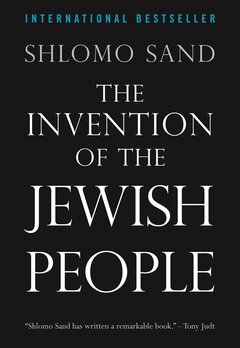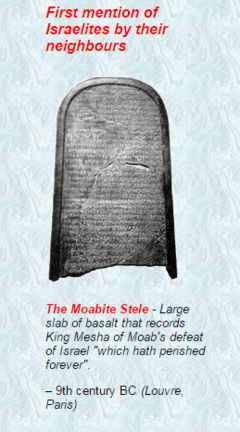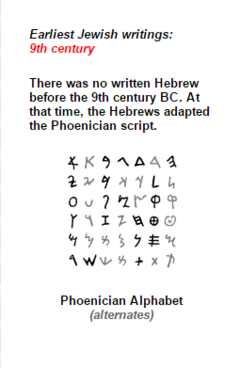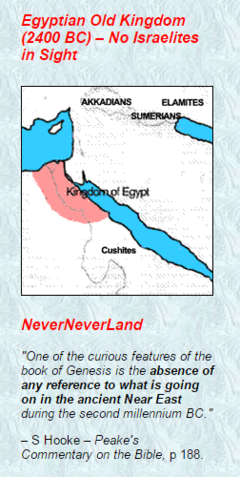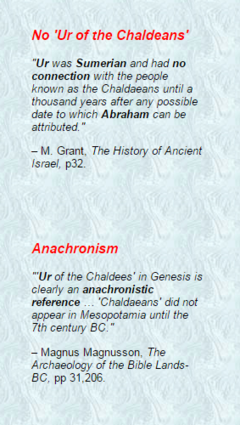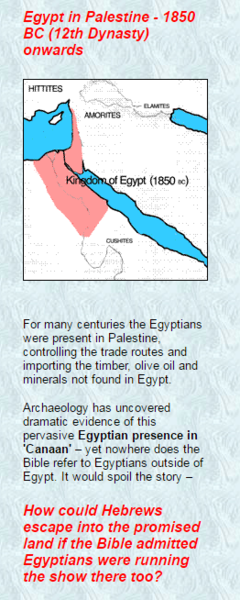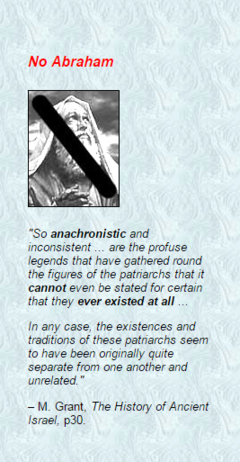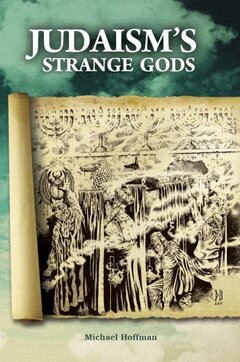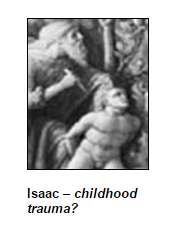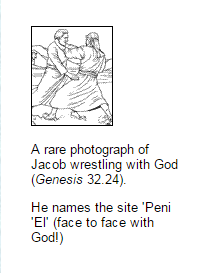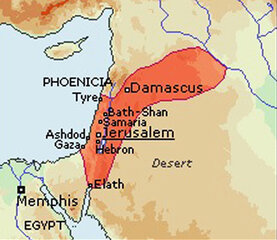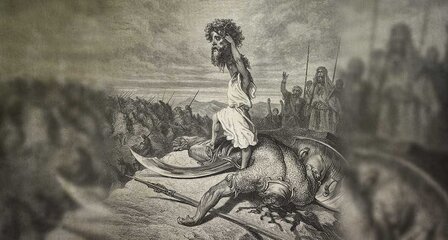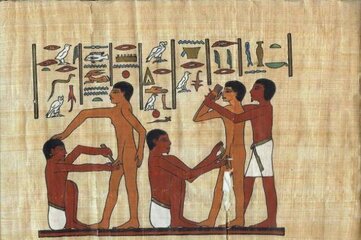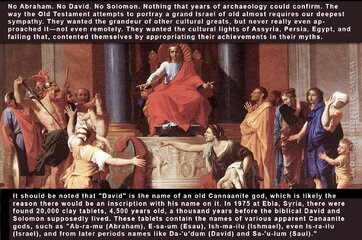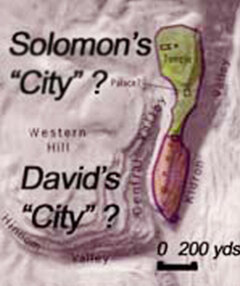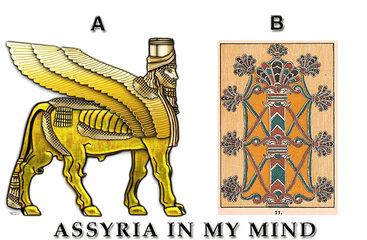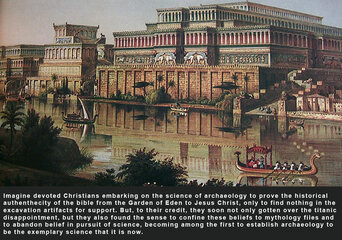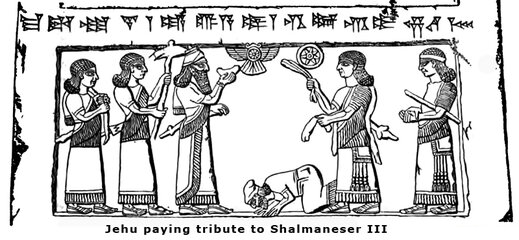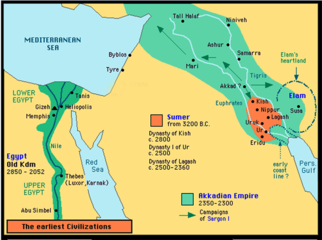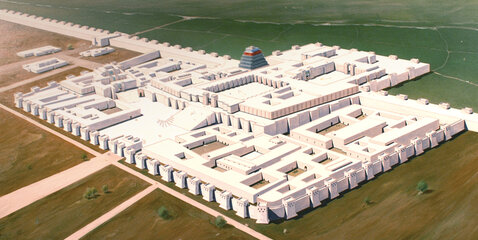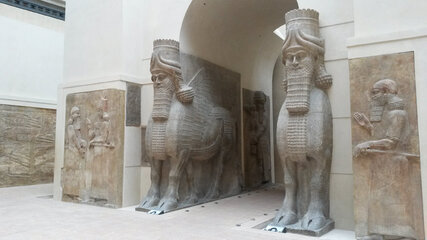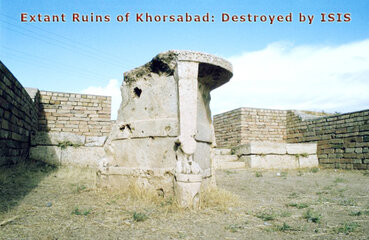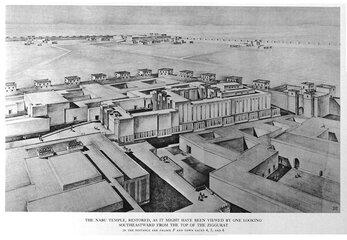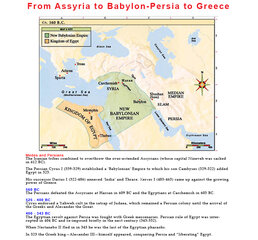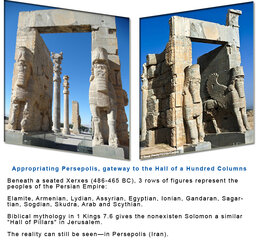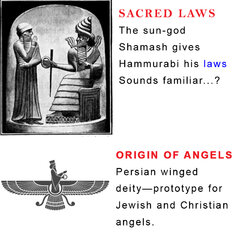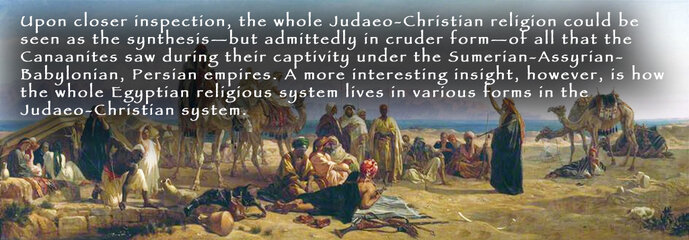Cyrus the Great, the Fire-Worshipping Hero of the Jewish Priests
The Canaanites found a great and mighty sponsor for the establishment of their religion in the person of no other than Cyrus the Great, the founder of the Babylonian Empire himself. In return, the heathen king gets endorsement of "Jealous" Yahweh, an amazing turn of events in the folklore of the captives.
"Thus saith the LORD to his anointed, to Cyrus, whose right hand I have holden, to subdue nations before him; and I will loose the loins of kings, to open before him the two leaved gates; and the gates shall not be shut." – Isaiah, 45.1.
With the rise of Cyrus, and the Persian conquest of Babylonia, an undreamt of opportunity was presented to the pious ‘elders’ of the Jews. Cyrus was a self-styled ‘Great King’, anxious to have all gods on his side for the conquest of empire. This included a Yahweh cult in the satrap of Judaea. Accordingly, many of the Jews (mostly descendants of the original exiles) were returned to the old homeland. A figure of 42,360 ‘together with their servants and two hundred singers’ is quoted, several times the reported number taken into exile.
Temple City
These descendants were sent back under Prince Sheshbazzar to set up a temple to help the Persian war effort. Its design – a succession of courtyards set high on a hill, at its heart enclosing a ‘holy of holies’ – was inspired by the multi-level temple ziggurats (which ‘reached up to heaven’) that the Jews had seen in Mesopotamia. Under the patronage of Cyrus, and despite the local opposition of Jews who had never left, the ‘children of Judah’, established a theocratic colony on the Persian model under an appointed Persian governor. Persian rule of Judah would last two centuries.
Before the exile, Jewish religion – such as it was – had Man facing an anthropomorphic, capricious tribal God, who looked for obedience rather than worship to assuage his anger. It was, apparently, Abraham's unswerving obedience when asked by Yahweh to sacrifice his son that validated his choice as ‘Patriarch.’ But at least obedience was within the wit of man himself. Pre-Babylon, only the ‘tribe’ of Levi could be priests and they performed the role of itinerant shamans. Post-Babylon, the Levite priests were downgraded to menial temple workers and the Sadducee clan took over the high priesthood. By taking for themselves the right to intercede with God, to placate his anger and honour his glory, the earthly power of the high priests of the temple was assured.
Fictional Temple
"We have not a stone of Solomon's temple…. We have no evidence at all for Solomon and his kingdom.
We have no contemporary textural sources which mention Solomon, and, as far as I am aware, he is not referred to in any other outside contemporary texts."
– Jonathan Tubb (Curator of Syria and Palestine, British Museum)
Monotheism
The theology changed to reflect the new organisation. Yahweh was elevated to sole god and was deemed to require endless sacrifice to placate his wrath. Thus all Jews acquired a duty to bring offerings to the priests (who were thereby freed of more mundane tasks). Not only did this give the priesthood their daily provisions and a major slice of the butchery business but also control over the lucrative leather trades. In time, tribute to the priesthood was extended to include tithes, dispensation fees and commission on money changing (only the ‘clean’ shekel could be offered at the temple; no other coinage was acceptable).
Taking their cue from Zoroastrianism, the dominant religion of Persia, the returnees brought with them not only priestly monopoly and control over worship (and in a theocracy that implied control over law and social behaviour as well) but also the notion of an evil god (Satan) as a counterpoise to good god (Yahweh). Similarly, for the first time Judaism acquired angels and demons. At this point appears the curious tale of an idyllic garden (shades of Babylon), a satanic snake and a disobedient female – which nicely explained why life was full of wickedness, why women should be subjugated and why there was death itself.
The Persians made no images of their dual gods, but for them fire represented purity and was an incarnation of the light god Mazda.. On the other hand matter (including the human body) was created by the dark god Angra Mainyu. In stark contrast, therefore, to the earlier influence of fertility rites of the Canaanite and Phoenician cities - the celebration of life - the Yahweh cult now became at heart hostile to the body. Human sexuality was to cause the priests more distress than any amount of bloodshed.
And bloodshed there was, as the colonisers (the ‘Golan’) drove out (and de-Judaised!) the original inhabitants (the Am Ha-Aretz or ‘people of the land’), whom they were forbidden to marry. The arrival of an organized priesthood acted as a brake on secular development which might otherwise have produced a local monarch, albeit one under Persian dominance. Both Nehemiah, ‘cup-bearer’ to the Persian king, and Ezra, his ‘minister of Jewish affairs’, introduced interpretations and refinements of ‘the Law’ which kept Jewish piety compatible with the interests and security of the empire. With a brutal ruthlessness, for example, Ezra commanded Jews to ‘send away’ their foreign wives and children. ‘Membership of Israel was now confined to the descendants of those who had been exiled in Babylon.’ (Armstrong, p102).
Without a Trace
Though much honoured in legend (and Hollywood) the simple truth is that no evidence has ever been found of David, Solomon or his ‘empire.’ Neither secular history, nor archaeology, provides a shred of confirmation for the highly detailed and colourful biblical stories. Not a single stone or artifact from what was supposedly the world’s most fabulous temple has ever been identified. The extraordinary magnificence of the Jewish Empire is matched only by the total void when we seek confirmation from any other source.
For example, the Asiatic Greek Herodotus – writing one of the world’s first histories in the 5th century BC – wrote of peoples and places throughout the Persian empire and beyond. Herodotus knew of lake-dwellers in far away Europe and of barbarous tribes along the north African coast. He was familiar with the painted warriors of the Sudan and with the nomads of southern Russia.
Yet in all his work, Herodotus makes no single mention of Jews or Hebrews, Judah or Israel. He speaks of the coastal cities of Sidon and Tyre but never of Jerusalem. He records the great temple of Aphrodite Urania at Ascalon but fails to mention any temple of Solomon.
He does, however, know of circumcision and says this:
"The Colchians, the Egyptians, and the Ethiopians are the only races which from ancient times have practiced circumcision. The Phoenicians and the Syrians of Palestine themselves admit that they adopted the practice from Egypt…No other nations use circumcision, and all of these are without doubt following the Egyptian lead."
– Herodotus, The Histories, Book 2,104; Penguin, p167.
Herodotus gathered much of his information first-hand from priests and holy men. His travels took him to the frontier of Upper Egypt and to Babylon itself. He also recorded popular beliefs and legends. Speaking of the inhabitants at the eastern end of the Mediterranean he says:
'The Phoenicians, with the Syrians of Palestine…have a tradition that in ancient times they lived on the Persian Gulf, but migrated to the Syrian coast, where they are found today. This part of Syria, together with the country which extends southward to Egypt, is all known as Palestine.'
– Herodotus, The Histories, Book 7,89; Penguin, p472.
For Herodotus, this land is the home of ‘Syrians known as Palestinians’. If tribesmen in the interior escaped his attention they assuredly were not the authors of a great empire which supposedly had existed a few hundred years before his own time. More than two thousand years later nothing has emerged to change our understanding:
"This is what archaeologists have learned from their excavations in the Land of Israel: the Israelites were never in Egypt, did not wander in the desert, did not conquer the land in a military campaign and did not pass it on to the 12 tribes of Israel.
Perhaps even harder to swallow is that the united monarchy of David and Solomon, which is described by the Bible as a regional power, was at most a small tribal kingdom."
– Ha'aretz Magazine, October 1999.
All that we do have is some evidence of minor regional war lords or ‘city bosses’ (‘kings’) who, in the centuries before first Assyria, and then Babylon, overran Palestine. Yet more tellingly in the Jewish ‘nationalistic’ saga, we have the rationale for a theocratic state and a religious caste system. The priests are born to rule both because it is Yahweh’s design and because secular kings (even magnificent ones) transgress and run amok.
Yet kings are not excluded out of hand. The priesthood loathed the diminution of their power and the intrusion of secular laws but were delighted by the enlargement of the territory of the theocratic state, such as might be achieved by a warrior king (and as idealised in the ‘empire’ conjectured for Solomon). The duality of power, the conflict between king and priest, runs as a theme through subsequent Jewish history and was never resolved.
Above all, from the ‘Davidic’ legend we get the supposed primacy of the ‘House of David’ and the awful conviction that, when the hour is right, a warrior/priest (or a warrior and a priest – keeping him on the straight and narrow!) will appear to lead the nation of Israel against the forces of darkness – a Messiah (or Messiahs)!
It is worth noting that 'Davidic descent' as some sort of exclusive cachet – supposedly one of the marks of Jesus – would have been patently absurd in first century Palestine. If that fabled polygamous king and his prodigiously promiscuous son Solomon – he of 'seven hundred wives and three hundred concubines'! – had actually existed, the passage of a thousand years (or twenty eight generations according to Matthew, forty three generations according to Luke) would have assured that each and every Jew – all seven million of them – could have made the same 'Davidic' claim!
Invention of 12 Tribes
"The twelve tribe system could not have originated in the age of the ancestors ... and probably not even in the early period of the Israelite settlement in Canaan ...
The tribal names were originally geographic names of parts of Palestine, but in Genesis they become the names of persons ...
The names of the tribal ancestors are all given popular etymologies, which in no way correspond to historical reality."
– J.R. Porter (The Illustrated Guide to the Bible, p47)
History ends with Theocracy
"In the Old Testament, history ended with the return to Jerusalem under Persian patronage after the Babylonian Exile."
– Magnus Magnusson (The Archaeology of the Bible Lands - BC, p213)
Sources:
J.A. de Gobineau, The World of the Persians (Minerva, 1971)
Paul Johnson, A History of the Jews (Phoenix Grant, 1987)
Dan Cohn-Sherbok, The Crucified Jew (Harper Collins,1992)
Henry Hart Milman, The History of the Jews (Everyman, 1939)
Josephus, The Jewish War (Penguin, 1959)
Leslie Houlden (Ed.), Judaism & Christianity (Routledge, 1988)
Karen Armstrong, A History of Jerusalem (Harper Collins, 1999)
Herodotus, The Histories, (Penguin, 1954)
Nicholas De Lange (Ed.) The Illustrated History of the Jewish People (Aurum, 1997)

